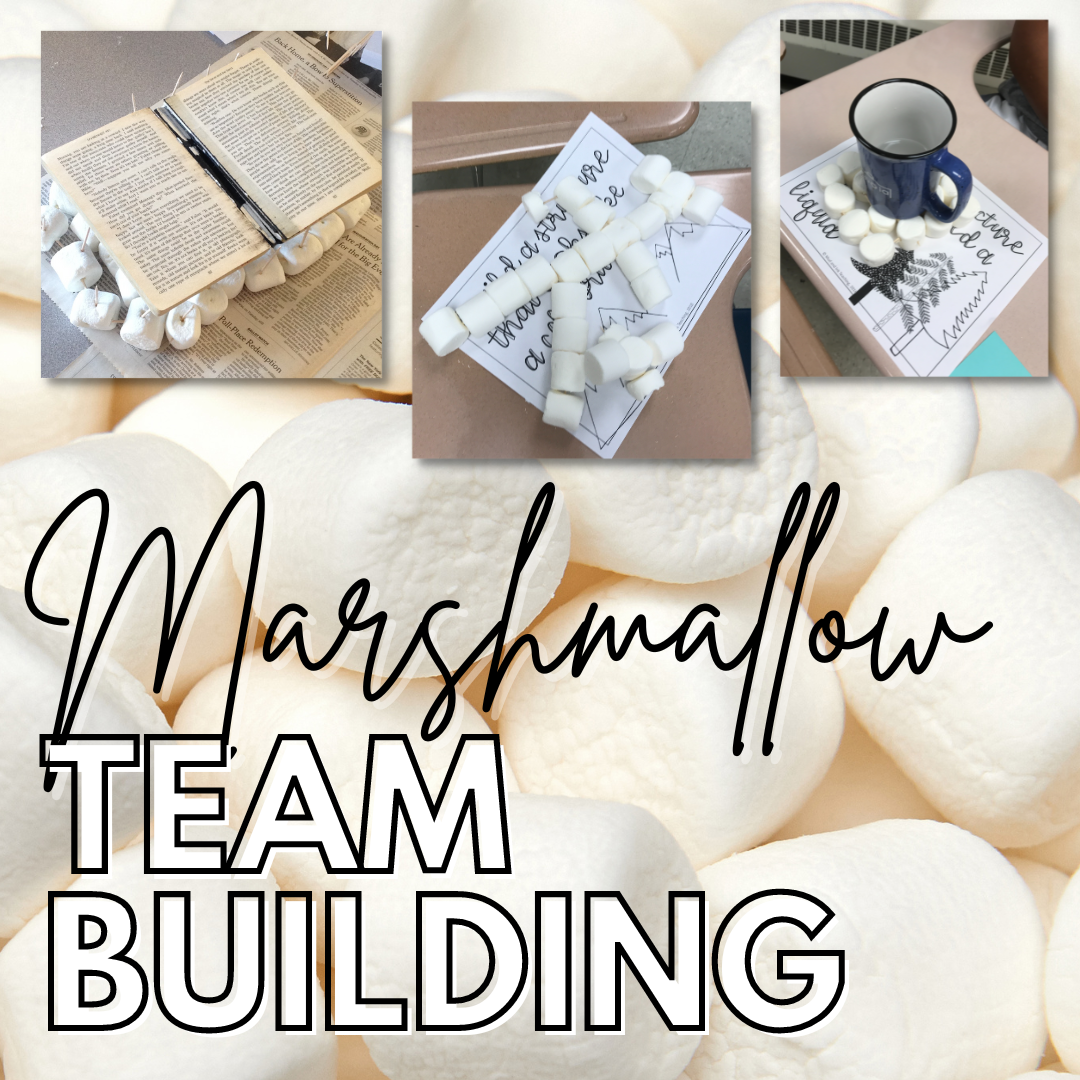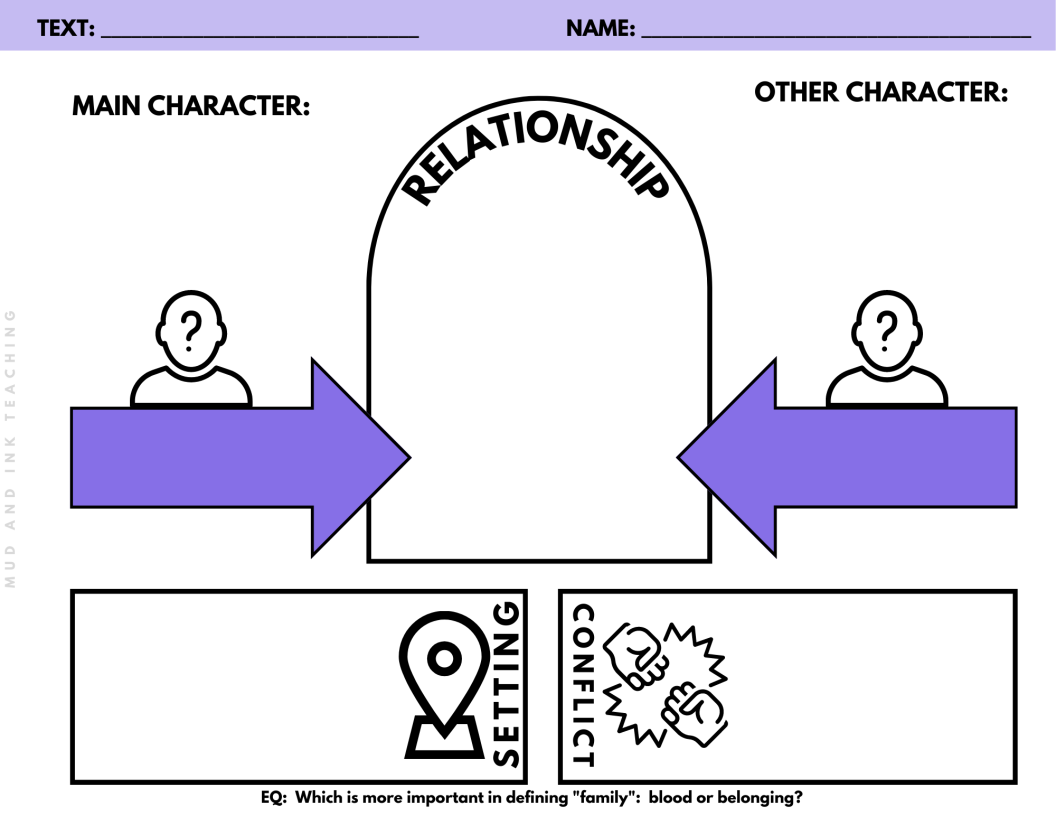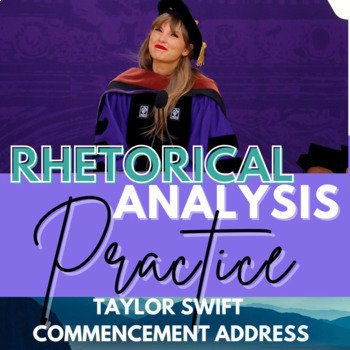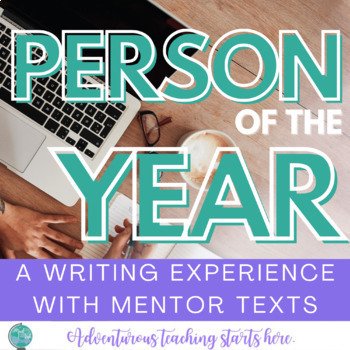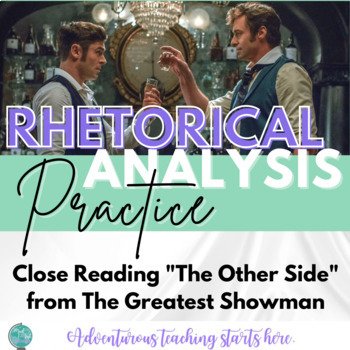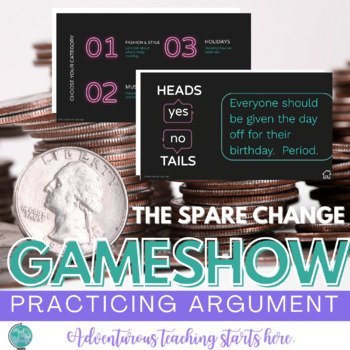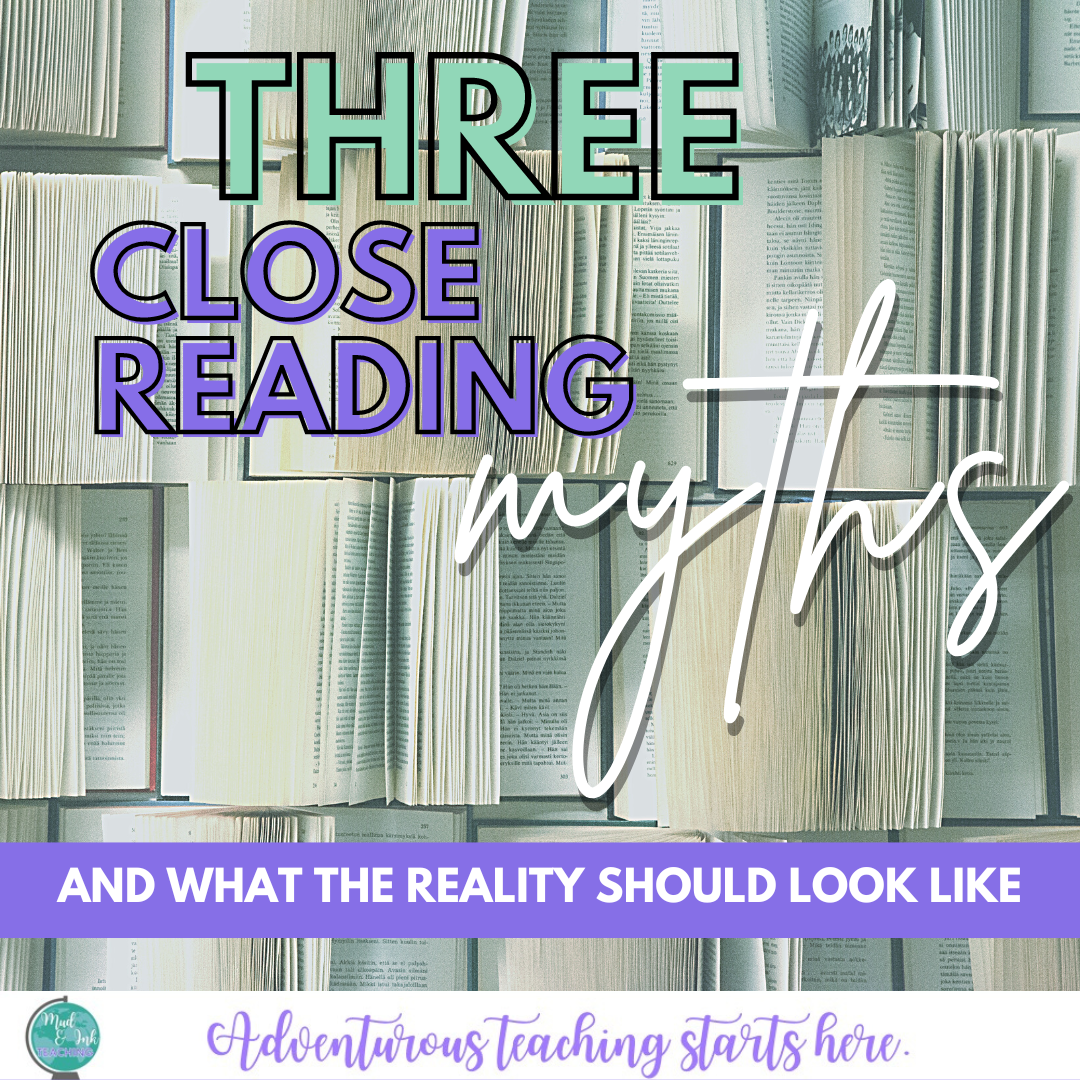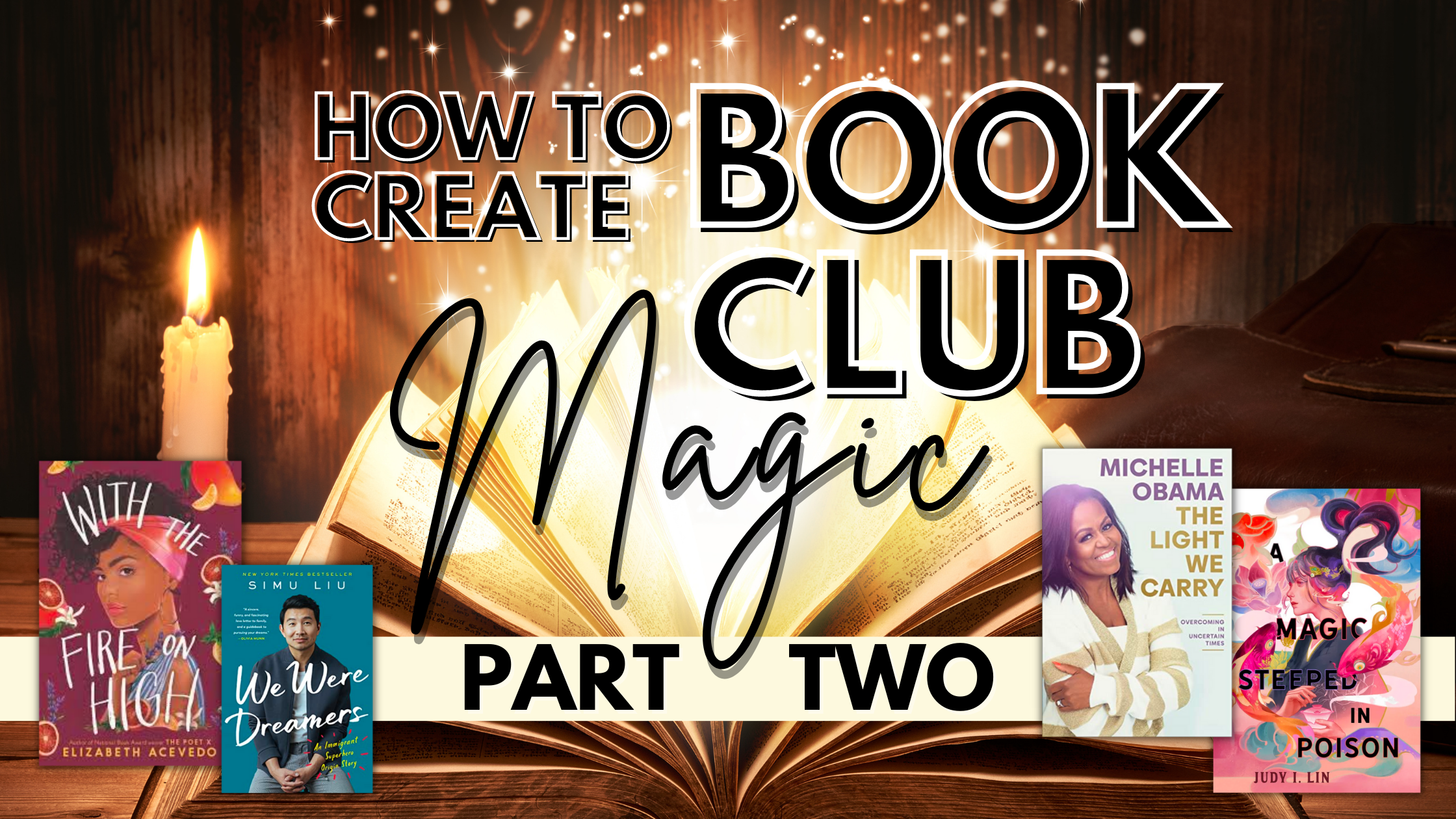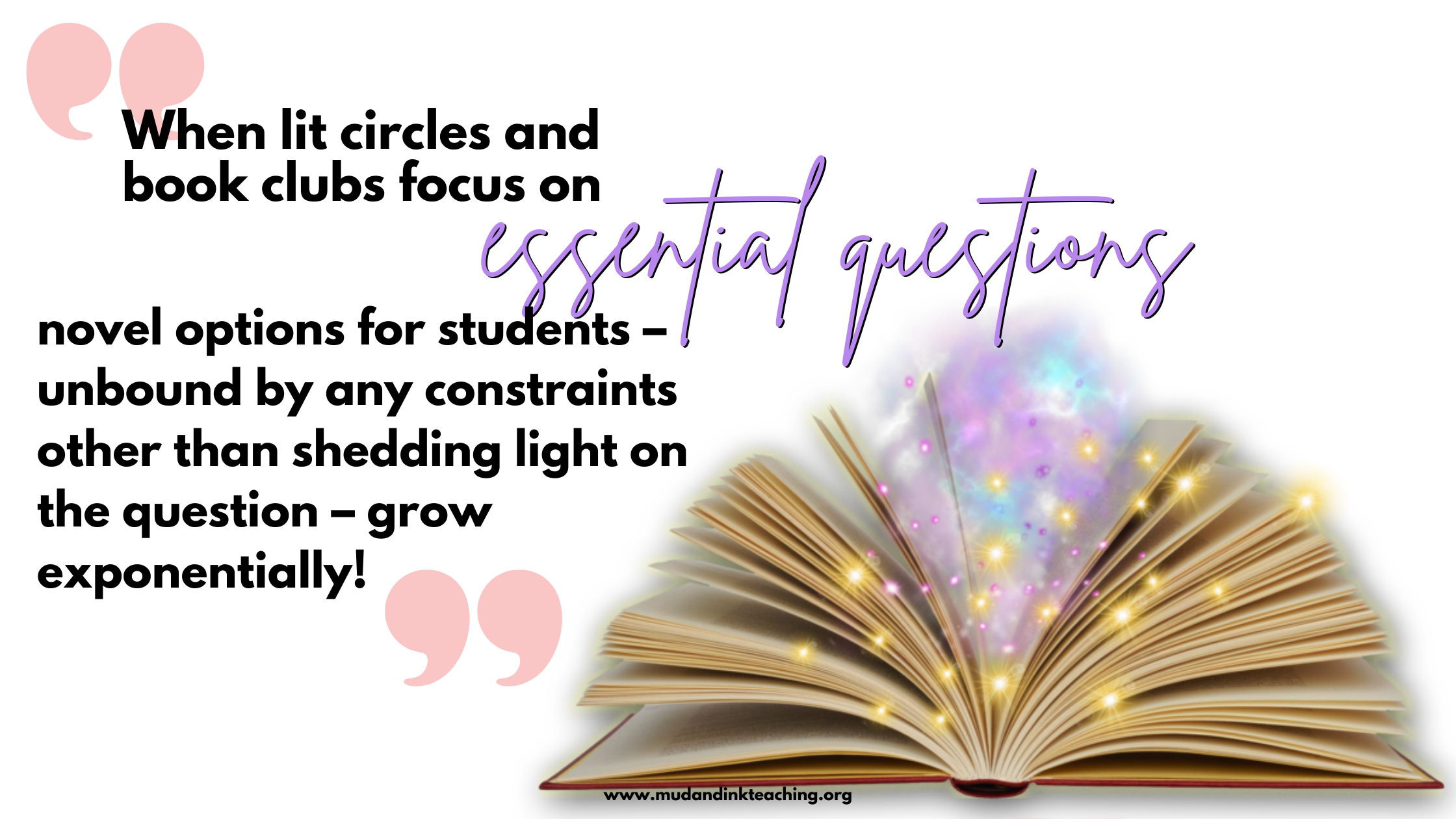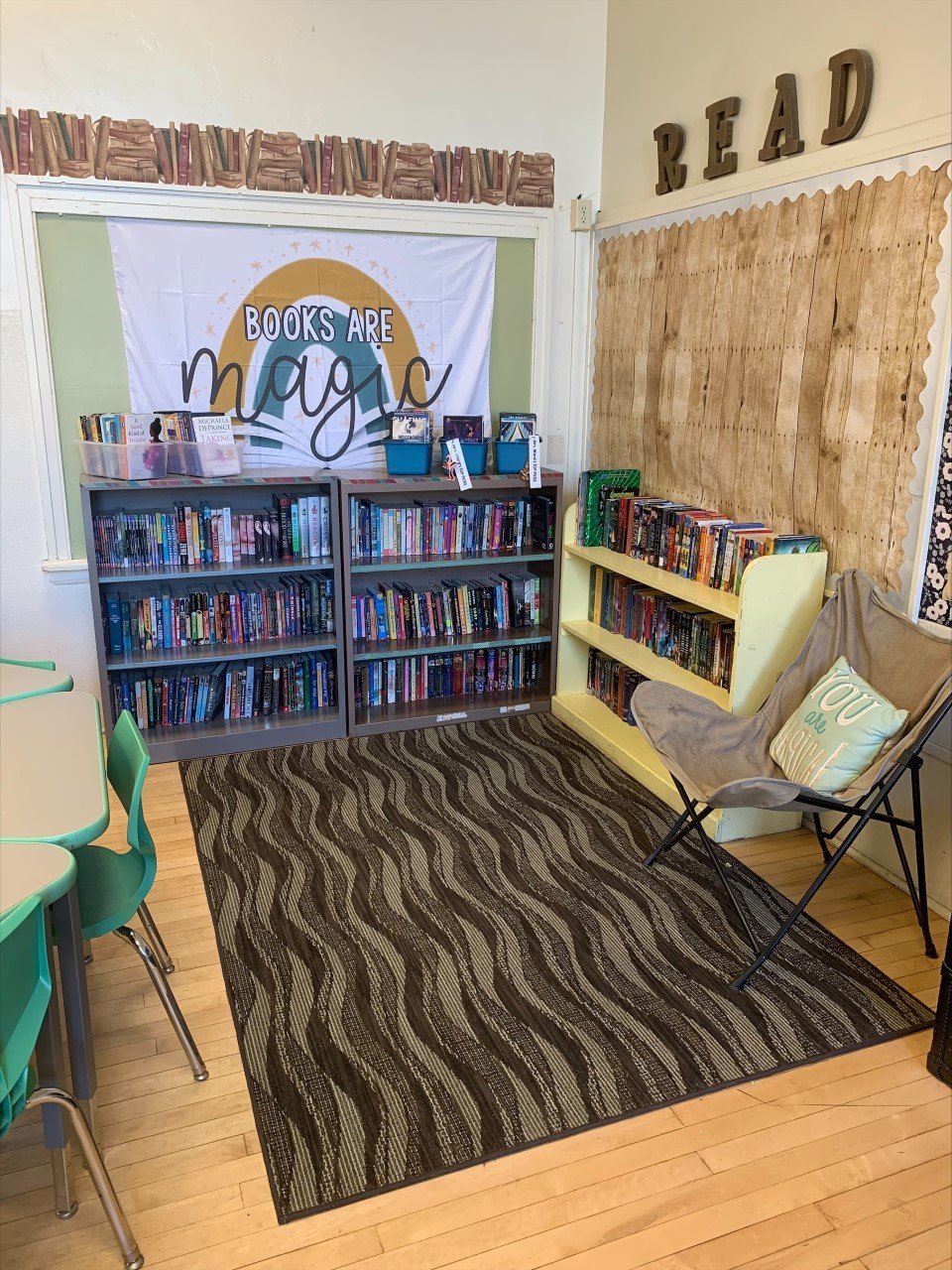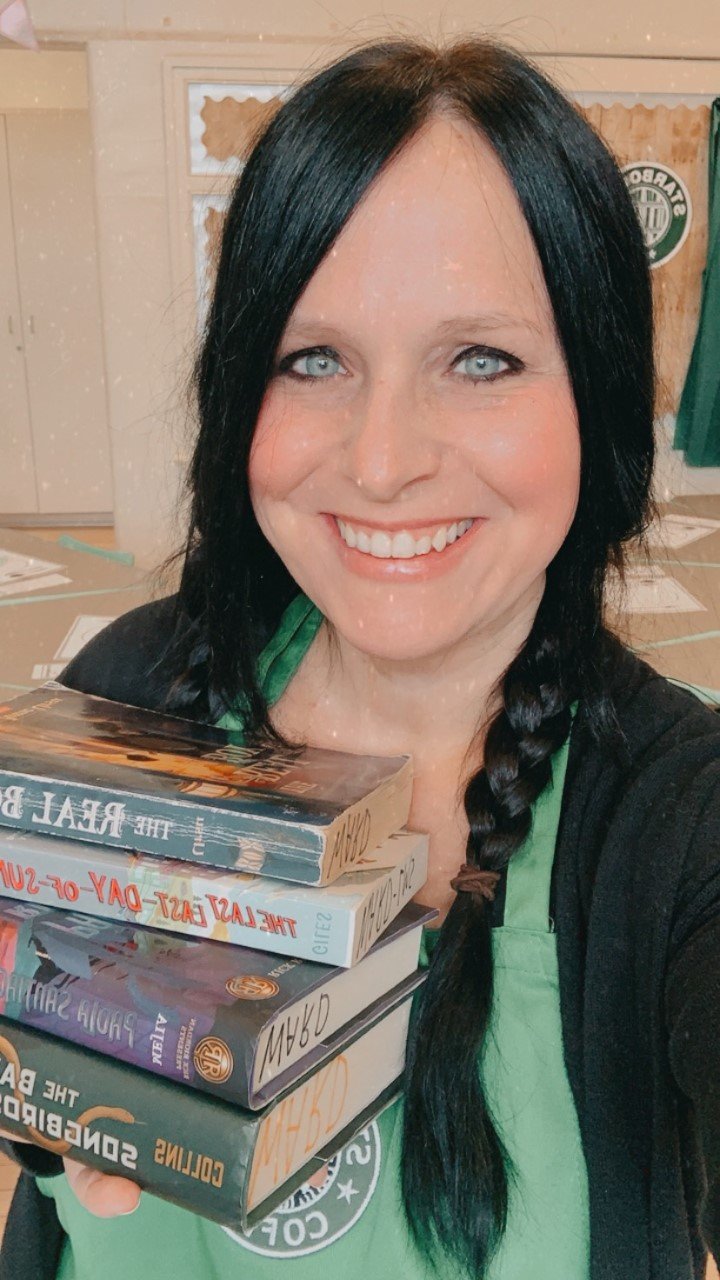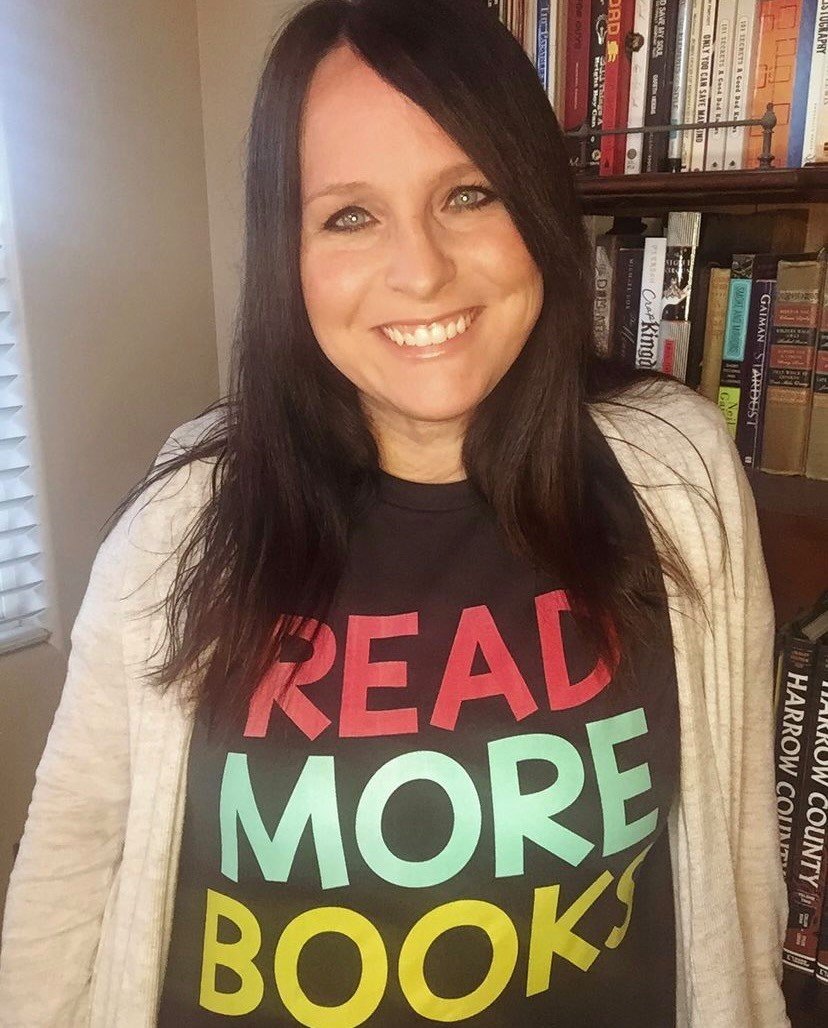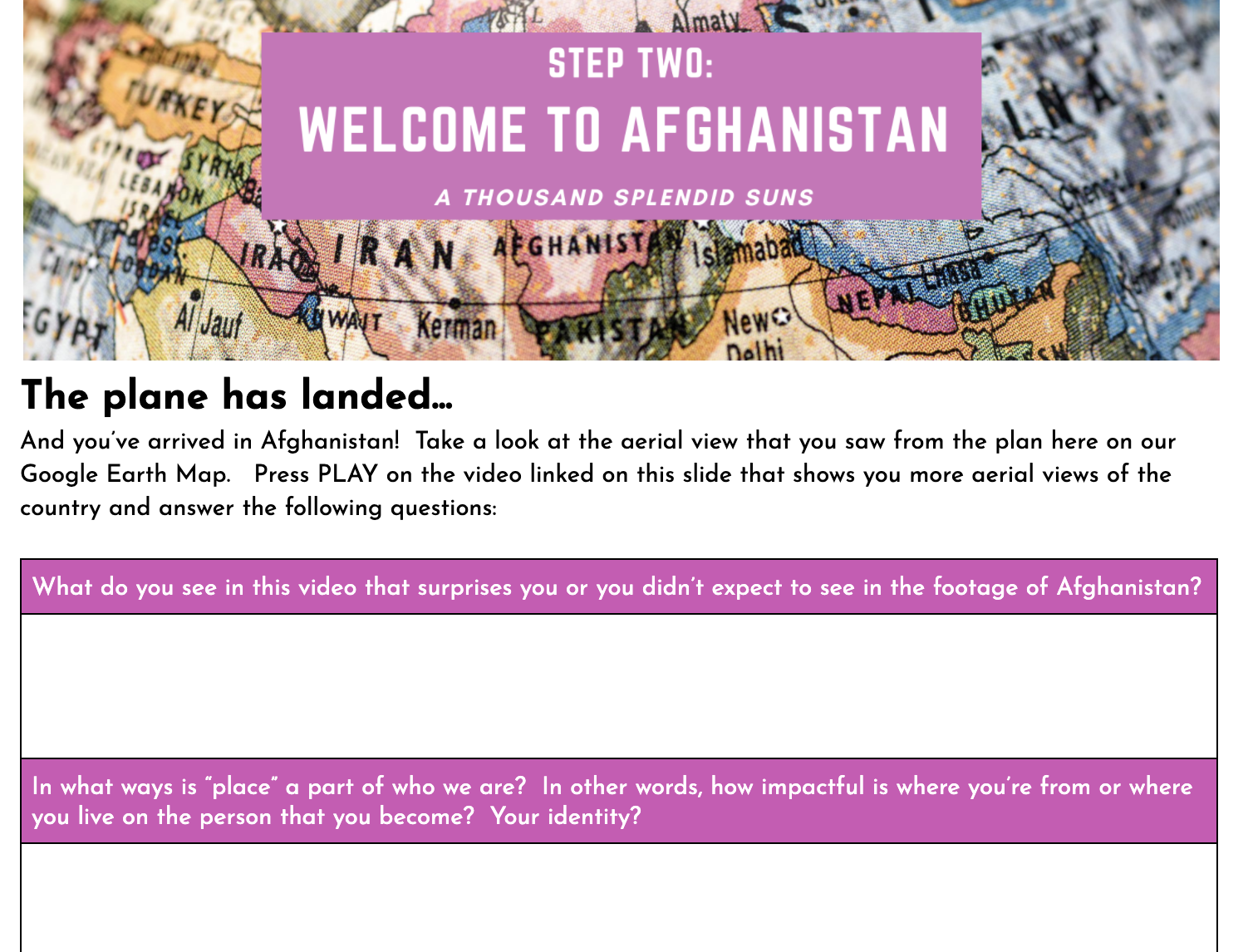
ADVENTUROUS TEACHING STARTS HERE.
Cultivating Critical Thinkers: My Approach to Teaching Literature
As an educator, I've always been passionate about instilling critical thinking skills in my students. It's a topic that I recently had the opportunity to reflect on during a professional development session, and I want to share with you the insights and strategies that I believe are essential for deep engagement in the classroom.
Cultivating Critical Thinkers: My Approach to Teaching Literature
As an educator, I've always been passionate about instilling critical thinking skills in my students. It's a topic that I recently had the opportunity to reflect on during a professional development session, and I want to share with you the insights and strategies that I believe are essential for deep engagement in the classroom.
Challenging the Status Quo
During a recent PD session, I found myself in a bit of a controversial spot. I questioned a fellow teacher's approach to curriculum, which led to a broader discussion about our roles as educators. It's crucial for us to think like our students and to prioritize deep critical thinking over simply entertaining them. We need to focus on developing skills that lead to deeper critical thinking and provide opportunities for students to engage authentically with the material.
Teaching Literature Beyond Comprehension
When it comes to teaching literature, my approach might be a little unconventional. I steer clear of recall-based or plot-based activities. Instead, I encourage students to seek out summaries on their own and focus on the bigger issues at hand. It's about letting go of the minor details and teaching students to read for big picture connections. Comprehension is important, but it shouldn't be the primary focus. We should be guiding our students to think critically about broader themes and societal issues.
The Power of Close Reading
Close reading is a significant part of my teaching strategy. It's not about getting through an entire novel; it's about diving deep into passages and analyzing them. This mirrors adult book club discussions where despite different levels of recall, everyone can contribute meaningfully to the conversation. Close reading fosters a collective understanding of the text and teaches students valuable rhetorical and literary analysis skills.
Pairing Texts and Media for Enhanced Engagement
I'm a big advocate for pairing contrasting texts and media to stimulate critical thinking. For instance, combining literature with podcasts or other media that address relevant societal issues can create a dynamic learning environment. This approach encourages students to engage critically with the material and see the connections between the text and the world around them.
Visuals and Hands-On Activities
Incorporating visuals and hands-on activities is another way to enhance metaphorical thinking and create moments for critical thinking in the classroom. These methods help students to visualize and interact with the concepts in a tangible way, further deepening their understanding and engagement.
Conclusion: Prioritizing Deep Engagement
My approach to teaching literature and critical thinking is all about prioritizing deep engagement, critical analysis, and real-world connections. It's about cultivating students' ability to think critically about the world around them. As educators, we have the power to shape how our students perceive and interact with the world, and it's our responsibility to equip them with the skills they need to navigate it thoughtfully and analytically.
In the end, the goal is not just to teach literature but to foster a generation of thinkers who can analyze, question, and contribute to society in meaningful ways.
READY TO TRY TEACHING EQ DRIVEN UNITS?
LET’S GO SHOPPING
Life's Blueprint: An ELA Lesson Honoring Dr. Martin Luther King Jr.
Dr. King’s legacy is especially powerful in the ELA classroom: his words, his rhetoric, and the passion with which he speaks them is not only worthy of study in its own right, but the overlaps into our content area make the analysis of the layers of his work that much more rich and impactful. Here is a free lesson walkthrough for your middle or high school English class celebrating Martin Luther King Jr.’s birthday.
Life's Blueprint: An ELA Lesson Honoring Dr. Martin Luther King Jr.
Dr. King’s legacy is especially powerful in the ELA classroom: his words, his rhetoric, and the passion with which he speaks them is not only worthy of study in its own right, but the overlaps into our content area make the analysis of the layers of his work that much more rich and impactful.
If your experience is anything like mine, I found myself a bit stuck in trying to find something different to read and analyze in honor of his birthday. By the time students got to me, they had already read or worked through “Letter from Birmingham Jail” and “I Have a Dream”, so a few years back I set out to find another great work to study that would be fresh for students and give them a new angle and understanding of the breadth of Dr. King's work.
What's your life blueprint?
This speech is a fantastic option if you find yourself in a similar position. Take a listen below:
I created a sketchnotes activity for you to use with some other lesson plan suggestions. I'm passing that along to you as just a thank you for being here and because sharing this work is so very important and I don't want anything to stand in the way of getting it done! On a seasonal note, this is the perfect e-learning lesson if school is called off around a snowy or brutally cold MLK day (it’s happened in Chicago before!).
LISTENING WITH SKETCHNOTES
The art of the sketchnote listening activity is that it takes us away from the “fill in the blank” mentality. With sketchnotes, students can actively listen, doodle, draw, sketch, and write in a way that vibes best with their brain’s pace and what emotionally resonates with them. You can play and pause the speech for each number to give students a chance to catch up, to share out loud, or to turn and talk to a partner. It’s important to note that each of the numbered components is NOT a question, rather, they’re phrases from the speech that serve to help students see the outline of his claim at a glance. The space on the page is for them to fill in with the details, evidence, and other words that exemplify that particular portion of the speech.
COMING BACK TOGETHER
Maybe students were turning and talking at a few moments during the speech, but if they haven’t checked in yet, give them that chance. Let them process in a small group table or in pairs through each of the three components of the speech.
Next, create an opportunity for full class discussion. I like to set up a post-it note gallery walk. I place these posters at the center or top of a giant post it note. Then, students move around the room to each of these pull quote posters to:
share a connection
add on to the idea
illustrate how this looks in their mind
elaborate with more detail
When the timer goes off (4-5 minutes is sufficient), students rotate to the next pull quote poster to add their thoughts. As they move, they can bring their sketchnotes with them to reference as they think through the speech with a larger context.
Finally, once students have rotated through each of the posters, you are set up to lead a large group discussion poster-by-poster soliciting students to share their contributions and discuss the speech even further.
GETTING STARTED
I set this lesson up and made the sketchnotes for you already! All you need to do is download them below.
THE IMPORTANCE OF BIPOC LEADERSHIP
The MLK Jr. holiday shouldn’t be the first time that a person of color is celebrated, highlighted, or studied. In the North American calendar, Dr. King’s birthday falls in January, and if we’ve gone an entire semester without looking at non-white leaders and cultural icons, that’s something important to reflect on.
There are opportunities all the time to give students access to meeting and researching the lives of powerful Black American “Influencers”. Before social media culture, activists, leaders, and speakers in the Black community were working tirelessly to shape the cultural landscape of America. Here is one way that I like to do that:
I hope you found these ideas helpful and inspiring. I hope you have a wonderful week at school and happy teaching!
LET’S GO SHOPPING
Planning a Novel Unit Reading Calendar
The art of pacing out the reading during a novel unit can be tricky, so we’re going to take some time today to talk through the process. Whether you’re teaching a classic or a contemporary YA title, there are special considerations to be made for the design of your calendar and how we backwards plan for ELA. Let’s jump in!
Planning a Novel Unit Reading Calendar
The art of pacing out the reading during a novel unit can be tricky, so we’re going to take some time today to talk through the process. Whether you’re teaching a classic or a contemporary YA title, there are special considerations to be made for the design of your calendar and how we backwards plan for ELA. Let’s jump in!
For a while now, I've had the pleasure of guiding countless teachers through the intricacies of curriculum design and instructional coaching. In one of our most recent videos, I delved into a topic that's crucial for any literature teacher: creating an effective reading calendar. Today, I want to share with you the insights and strategies I discussed for building a reading calendar specifically tailored to the novel Fahrenheit 451. You can skim through this post to see the gist and then watch the full video when you’re ready!
Understanding Your Timeframe
The first step in crafting a reading calendar is to get a clear picture of the real time you have available for the unit. It's not just about the number of days on the calendar; it's about the actual class time you can dedicate to reading, discussions, and assessments. This understanding is foundational because it shapes how you'll pace the novel and plan your activities.
Setting Clear Assessment Goals
Before you dive into the reading schedule, it's essential to set your assessment goals. What do you want your students to achieve by the end of the unit? How will you measure their understanding and engagement with the text? These goals will guide you in structuring your calendar and ensuring that each activity aligns with your objectives.
Structuring for Engagement and Ownership
A well-structured reading calendar does more than just outline what to read and when; it fosters student ownership and engagement with the text. I advocate for backward planning, which means starting with your end goals and working backward to determine the steps needed to get there. This approach ensures that every part of your calendar is purposeful and directed towards your learning outcomes.
Decentering the Text for Broader Discussions
In our discussion, I emphasized the importance of decentering the text to allow for broader analysis and discussions. This means assigning larger chunks of reading at a time and not getting bogged down by focusing solely on the text itself, and instead, focusing on the essential question. By doing so, you create space for students to connect the novel to larger themes and ideas, which enriches their learning experience.
A Week in the Life of a Reading Calendar
PIN ME!
Let me give you a glimpse into how I structure a reading calendar. Mondays are for assigning reading, which sets the tone for the week. Tuesdays are reserved for small group activities, which encourage collaboration and deeper understanding. Wednesdays and Thursdays are perfect for close reading exercises, allowing students to dive into the text's nuances. This structure balances guidance with autonomy, giving students the framework they need while empowering them to take charge of their reading.
Flexibility and Adaptation
One of the most important lessons I've learned is the value of flexibility. Every classroom is different, and what works for one may not work for another. It's okay to adjust the reading schedule based on your school's timetable and to be open to rearranging assessment, small group, and close reading days as needed.
Final Thoughts
Creating a reading calendar for Fahrenheit 451 or any novel is a balancing act between structure and flexibility. It requires an understanding of your timeframe, clear assessment goals, and a willingness to adapt to your students' needs. I encourage you to use the template I've provided as a starting point and to check the description box for additional resources.
I wish you all the best in planning your reading calendar. Happy teaching!
LET’S GO SHOPPING
5 Ways to Look at the Magic of Clarisse in your Fahrenheit 451 Unit
Now, more than ever, we need to have Fahrenheit 451 in front of our students. From the new onset of AI technology to the daily threats of our intellectual and academic freedom, Fahrenheit provides windows, mirrors, and doors into our present and our future. While Montag’s transformation, the working symbolism, and general dystopian world-building are all incredibly important pieces to focus on, I’d like to argue that it’s possible we need Clarisse McClellan the most.
Now, more than ever, we need to have Fahrenheit 451 in front of our students. From the new onset of AI technology to the daily threats of our intellectual and academic freedom, Fahrenheit provides windows, mirrors, and doors into our present and our future. While Montag’s transformation, the working symbolism, and general dystopian world-building are all incredibly important pieces to focus on, I’d like to argue that it’s possible we need Clarisse McClellan the most.
Clarisse.
The enigma.
The one character my students always feel collective sorrow for losing.
She brings us so much in this story but in the chaos of teaching and planning, her magic can be looked over. I’m here to help! Here are the most powerful places to let Clarisse step into the moonlight (too cheesy?):
SKILLS: CHARACTERIZATION - FOIL AND/OR STATIC
One of the very first close reading lessons that we do is a side-by-side close reading between the first introduction of Montag and the first introduction of Clarisse. Between the imagery drawn from nature to the colors used in their description, this is a great place to clearly teach the purpose of a foil or static character. Clarisse’s constancy — her unwavering commitment to being exactly who she is and refusing to conform — is what allows us to see Montag’s transformation. There is a distinct “Montag before Clarisse” and “Montag after Clarisse”. Not all literature gives us such a clear angle to teach this piece of literary craft and I highly recommend using close reading to do this.
SKILLS: FIGURATIVE LANGUAGE - SYMBOLISM
Clarisse is nature. She is water. She is the dew drops on the grass. She is the wind. As we learn about symbolism and track it throughout the novel, Clarisse’s symbols connect our readers to hope and humanity. Clarisse's appreciation for the natural world and her desire to connect with it on a personal level stand in stark contrast to the technology-obsessed, disconnected world of the novel. Clarisse (and her many objects) are a symbol of hope and resistance against a dystopian society. Her existence and actions inspire the protagonist Montag, and by extension, readers, to consider the possibility of change and a better future.
THEMES: HUMAN CONNECTION
If you’ve ever looked around your classroom, I bet you’ve seen phones peeking out of hoodie pockets, fingers flipping through TikTok, and wondered: what on Earth does the future have in store for us? Clarisse is our character to bring everyone back to our humanity (while Mildred does a fine job of warning students of the consequences of continued obsessive technology behavior). Clarisse seeks genuine human connections and meaningful conversations in a world where people are more interested in mindless entertainment and shallow interactions through screens. Her character highlights the importance of real, face-to-face relationships, and every year that I’ve taught this, students DO connect to her. Students DO express the feeling that they’d much rather a world full of Clarisses than a world full of Mildreds.
All of the contrast provided by Clarisse gives us ample opportunity to close read and discuss the roles of other characters. When we look at the Montag and Mildred’s marriage, it is one thing by itself, and an entirely different thing when we consider Clarisse’s impact. Beatty and Montag also have a distinct relationship, and that is shifted entirely as Clarisee’s impact works its way between them.
THEMES: INDIVIDUALITY & QUIET REBELLION
In my Fahrenheit 451 unit, we examine the Essential Question: To what extent is rebellion a requirement for society to progress? Again, Montag typically sits at the center of this conversation, but none of his transformation would be possible without Clarisse. Clarisse values her individuality and refuses to conform to the mindless consumerism and thoughtlessness of her society. Her character serves as a reminder of the importance of maintaining one's unique identity in the face of societal pressures - something that is becoming increasingly harder to do for us as adults and especially for students. She thinks deeply and critically about the world around her. She questions the conformity and superficiality of her society, encouraging readers to do the same in their own lives. Her love for books and the ideas they contain represents a rebellion against a society that burns books to control information and thought. This underscores the importance of literature and the free exchange of ideas.
THEMES: THE POWER OF FEAR
Clarisse might be the first person that Montag has ever heard ask a question, much less questioning authority. She challenges the oppressive government and the censorship of books - and in doing so, is killed. The cost of her quiet rebellion, the cost of keeping the lights on, having conversations, and asking questions…the cost was her life. This underscores the power of fear: when we are afraid of what we don’t understand, fear can convince us to take extreme action in an effort to protect our comfort zone. This might be one of the most important themes for students to take away from studying the novel. Clarisse made Montag uncomfortable, but she also brought him out of the dark and into the light. As we work through Beatty’s speech in Part 1, I like to ask students what Clarisse’s reaction would be to what Beatty is reporting. In so many of Montag’s major close reading moments (moments of transformation), his last trailing thought always comes back to Clarisse and the feeling of her closeness and the painful reality of her loss.
Ready to go all-in on Fahrenheit?
If you’re ready to take the leap and transform the way you’ve always taught Fahrenheit or start teaching it for the first time, I have you covered. My complete unit is designed to take you through 5-6 weeks of inquiry driven, student-centered learning. Learn more about the unit here and be sure to click PREVIEW to take a look inside!
RHETORICAL ANALYSIS RESOURCES
55+ Books for Your Next American Dream Unit for High School ELA
One of my favorite units to teach is a unit that focuses on the American Dream. It’s the perfect way to hone in on complex characterization and the layers of complexity are widely accommodating for skill level. Whether you’re building the unit to teach as a whole class novel unit or as a literature circles unit, this book list is here to save you time and energy in narrowing down the search.
THE AMERICAN DREAM: INSPIRING OR DESTRUCTIVE?
One of the most frequently taught units in the American high school system is one centered on The American Dream. In some cases, this can be the focus for an entire 11th grade year study of literature. And while it’s a necessary and important lens for us to use when examining literature, it can get stale or even oversimplified when working with students. After several years of experimenting, I have found this Essential Question approach to excite and engage students across skill levels, interests, and backgrounds. Whether you’re building the unit to teach The Great Gatsby, A Raisin in the Sun, or another American classic or you’re ready to tackle this topic as a literature circle unit, this book list is here to save you time and energy in narrowing down the search. The books on this list open up the conversation about the American Dream widely and represent a variety of experiences and voices.
Themes VS Essential Questions
For a long time, I taught theme-based units: units were based on a teacher’s pre-selected theme and all of the learning was connected underneath the umbrella of the theme. I really liked the sense of connectedness, and quite honestly, I was craving that coming from a much less organized situation when I began my career. But no matter how hard I tried, I couldn’t shake the teacher-centeredness of this approach. The students had very little investment in the choice of the theme, and the direction of the conversation around the theme, and so much of it was tied to the teacher’s decided trajectory for the unit.
Inquiry, on the other hand, gave me the chance to use the best parts of themes, but deepen them and hand them over to students. Inquiry takes a thematic idea, roots it in a question, and then asks students to spend the duration of the unit investigating and exploring potential answers to that question as they progress toward the summative. Look at it this way as a “unit makeover” :
BEFORE: Unit 1: THE AMERICAN DREAM
AFTER: Unit 1: IS THE AMERICAN DREAM MORE LIKELY TO INSPIRE OR DESTROY?
The thematic/topical unit states the focal point of the unit and we can assume that each of the texts in that unit will reveal different versions of the American Dream. The inquiry unit will do those same things as the thematic unit, but nudges students a massive step further: is it more likely to inspire us to do great things or destroy us along the way? The argumentative edge to this question presses students out of simple definitions and into the messy business of stating a claim on a continuum. This one big question begs dozens of smaller ones and sets up a unit that is connected, but also divergent. Most importantly, this question helps the unit address the critical nature of the way the dream manifested in drastically different ways depending on a person’s race, immigration status, and ancestry. This is a unit that is unified under a topic (The American Dream), but also ready to twist and turn with student curiosity. In the video below, I give a big longer take on the ways this question opens up possibilities within a unit:
Scroll through the list below of titles that are absolute perfection for this particular unit. Bookshop.org is a wonderful partner working to bring business to small, local bookstores, so if you can swing it, shop the list directly and you’ll be able to help out bookstores in your area!
Elevating Your Gatsby Unit: Examining Inspiration and Destruction
The duality of the American Dream - its capacity to both inspire and destroy - lies at the core of F. Scott Fitzgerald's iconic novel, The Great Gatsby. When teaching this masterpiece, the essential question, "Is the American Dream more likely to inspire or destroy?" serves as a powerful lens through which students can explore the complex and often contradictory nature of this elusive ideal.
Through Gatsby's relentless pursuit of his dream, students witness the transformative power of ambition and hope. Yet, as his story unfolds, they also grapple with the destructive consequences of his obsession, the moral compromises he makes, and the ultimate emptiness of his achievements. This essential question allows students to delve into the multifaceted aspects of the American Dream as portrayed in the novel, from the glittering allure of wealth and social status to the disillusionment and despair that can lurk beneath the surface.
By incorporating this inquiry-driven approach, teachers can foster a more dynamic and engaging learning environment. Students are encouraged to question and analyze the various characters' journeys, their motivations, and the ultimate consequences of their pursuit of the American Dream. This leads to rich discussions, insightful writing, and a deeper appreciation of the enduring relevance of Fitzgerald's cautionary tale.
SHARE IN THE COMMENTS!
What other books would you add to this list? I know there are so many that fit this EQ so perfectly and it was hard to keep the list manageable. I’d love to hear your additions in the comments!
let’s go shopping!
Teaching Short Story Units with a Modern, Contemporary Twist in Secondary ELA
If you’ve ever found yourself searching the internet for “contemporary short stories” or “modern short stories” because you’re tired of teaching the same classic stories over and over again, I have THE HACK to change everything for you!
If you’ve ever found yourself searching the internet for “contemporary short stories” or “modern short stories” because you’re tired of teaching the same classic stories over and over again, I have THE HACK to change everything for you!
I won’t even make you wait until later to hear my little secret. I’m just gonna spill the beans :)
Stop searching for short stories and start teaching NOVEL EXCERPTS!
THE BENEFITS OF USING NOVEL EXCERPTS
Let’s get something clear from the get-go. This blog post is not advocating for exclusively teaching excerpts all year long. Some context here is very important: my suggestion is to use novel excerpts to update the outdated short stories that we find anthologized so frequently. This is a suggestion for the teacher in a short story unit rut that wants more voices, more styles of writing, and something that’s both easily accessible and FREE. Almost all of our favorite YA and adult novels have sample chapters available online, oftentimes directly from the publisher’s website.
All this is to say, we NEED full-length works in our curriculums. But that is a blog post for another day and not what you came here for. So let’s proceed.
DIVERSE VOICES
When we talk about the kinds of texts our students need, the conversation should always come back to representation. Are the life experiences, family dynamics. racial histories, gender identities, and other ways that make our students’ lives unique and important need to show up in the stories and protagonists that we include in our curriculum. Using publisher’s websites and Goodreads is a great way to research titles for the voices that you think your short story unit is missing. Once you’ve found a title, search the novel title and the word “sample” or “excerpt” in Google, and more likely than not, you’ll come up with a result!
Not all excerpts are created equal, of course, so read through what you’ve got and make a call.
Need more insight on representation and our classroom libraries? Check out this guest post from my friend John Rodney about inclusive LGBTQ+ stories and protagonists.
2. VARIED WRITING STYLES & GENRES
Here is another thing that is easier to search with novels as opposed to short stories: searching by genre! So often I see teachers lumping a bunch of stories together and naming their unit the “short story unit”. In this case, all that the stories have in common is that they’re, um, short? Not novels? So thinking through the idea of genre, not only can we find stories with general commonalities, but it sets us up nicely the opportunity to build Essential Questions.
3. FREE, HIGH-QUALITY TEXTS
I love book shopping just as much as the next English teacher, but when it comes to picking up anthologies, skimming the table of contents, and then reading each and every story, it can become a cumbersome task when rewriting a unit. Is it worth it? Absolutely — but only if you have the time and the budget. If you’re out of time and have zero budget, follow the tips above and start with your favorite novels that you think speak to each other. Start layering your excerpts underneath the umbrella of an Essential Question until you have a rich, varied, interesting, and most importantly, FREE brand new set of texts.
TWO SHORT STORY-EXCERPT UNITS TO TRY
If the above info was enough for you to take this idea and run with it, by all means, go and run! But if you’re wishing that you had a model to look at before getting started, I have two units to share with you here. I’m happy to share the gist and outline with you here, and if you’d like to purchase either, they’re only $8 each in my TpT store.
START WITH YOUR ESSENTIAL QUESTION
To me, this is the most vital part of the short story unit makeover. Units that are driven by inquiry and curiosity beyond the texts provided create a natural engagement that’s hard to achieve otherwise. So here are two EQs that I’ve used with short story units:
Which is more important in defining "family": blood or belonging?
Through which lens is it better to view others: trust or skepticism?
Each of these questions sets up an interesting task for the creator (you!). What kinds of voices can I find to shed light on this question? What are the various branches that lead back to this EQ? How can I share a variety of perspectives and experiences across time, gender, race, ethnicity, and genre? Or even — would one of these questions set me up to explore various ways of exploring one genre?
BUILD YOUR TEXT SET
So for the first question about family, I decided to treat this text set thematically: each text will offer a different perspective on the idea of what makes a family a “family”. I started with a few novels that came to mind right off the bat: Where the Crawdads Sing by Delia Owens, Far From the Tree, and . To find a few more, I went to Goodreads and searched “family”. After reading a few summaries and checking out their corresponding excerpts, I decided that Take Me With You When You Go by David Levithan and Jennifer Nevin and From Here by Luma Mufleh would be a perfect fit. This grouping offers us fiction, memoir, multiple narrator style storytelling, a novel in verse, a story about pregnancy and adoption, a refugee perspective, and so much more. No matter how different and varied these stories are, they all come back to the same thread: how do we define family?
For my other question, I had in mind a mystery and suspense genre focus even before writing the EQ, so I knew I wanted to have the texts be connected by genre. I pulled a few thrillers, a few mysteries, and was sure to include a YA crowd favorite: One of Us is Lying. My complete text set list includes excerpts from:
One of Us is Lying by Karen M. McManus
Monday’s Not Coming by Tiffany D. Jackson
The Box in the Woods by Maureen Johnson
In a Dark, Dark Wood by Ruth Ware
The goal of this particular unit is to give students the opportunity to explore the genre of mystery and thriller while trying to find out what these kinds of stories tell us about how we should approach our own view of the world.
BACKWARDS PLAN YOUR UNIT
With short stories, it’s important to backwards plan the same way we backwards plan any other unit. Here are a few questions to ask yourself as you sit down with your planner (I use Artful Agenda: a pretty, digital planner that syncs up with my Google Calendar):
What is your goal for this unit?
What should students be able to do by the end of this unit?
What assessment tool will be used to measure students at the end of the unit?
What can I use regularly during this unit to give students plenty of practice?
Which skills need direct instruction and which need review and practice?
The true danger of any unit is trying to plan starting with day one and forgetting about the end until you get there. Short stories can take a surprisingly long time to read and discuss, so by backwards planning, you can avoid being blindsided by your own story selections (I’ve been there — “The Lottery” and I have a long history of ups and downs). In my short story units, I plan backwards using templates (similary types of lessons on repeat). Every unit I teach must have:
A gateway activity (something to spark curiosity and get them excited about the EQ)
An anchor tool (a graphic organizer or handout that is used on EVERY short story to help students focus on the most important skills of the unit)
Formative assessments
Summative assessment
From that starting point, I begin to fill things in little by little keeping in mind the realistic pace that I’d like the unit to have.
MORE SHORT STORY UNIT IDEAS
My co-host of the Brave New Teaching podcast, Marie Morris, has a wonderful short story unit that’s entirely made up of folktales and fairy tales. She walks through the unit in this episode here:
Are you excited about the idea of threading together your short story unit with Essential Questions? I have an entire blog post dedicated to even more ideas for EQs and text set suggestions. Check it out here!
LET’S GO SHOPPING!
How to Create Book Club Magic Using Essential Questions {Part Two}
Lackluster literature circles? Boring book clubs? The remedy: lose traditional “role” sheets, declare freedom from organization by topic or genre, and build essential question-focused literature circles or book clubs instead. An EQ as the throughline for your lit circle/book club unit kicks up the impact that comes from having kids talk about what they read in a way that just does not happen with any other method. Here’s why…
Lackluster literature circles? Boring book clubs? The remedy: lose traditional “role” sheets, declare freedom from organization by topic or genre, and build essential question-focused literature circles or book clubs instead. An EQ as the throughline for your lit circle/book club unit kicks up the impact that comes from having kids talk about what they read in a way that just does not happen with any other method.
This is the second blog post in a series dedicated to this kind of magic. Make sure you catch Part One when you finish reading here!
REASON # 3 – BUILD COMMUNITIES WITHIN A COMMUNITY
Lit circles like “real” life book clubs
One of the great things about lit circles and book clubs is how they build communities within your larger classroom community.
In “real” life, we join book clubs to find community – to have a social outlet where we share a common interest. And even though lit circles have always had a cooperative learning element built in by design, using an EQ focus takes it beyond a learning strategy.
First, kids choose their book in a more authentic way, so regardless of how well they might know other students in their group, they have an immediate connection.
Second, like in “real life” book clubs where discussion is not dictated by a “role” but with genuine questions, connections, and a desire to understand, an EQ provides a touchpoint for question creation and passage selection. It also offers a way for groups to come back to center and ground discussions if focus waivers.
The work with supplementals and text pairings also offers students opportunities to build community as they try to make connections and develop understanding between texts, looking at “big” ideas through different lenses. Jigsawing between groups is a community builder, and EQs offer more opportunities for this because the text is not centered.
An EQ offers the opportunity for students to easily connect digitally. With no shortage of apps for virtual meetings, book groups can even be created between classes, providing alternative ways to foster and develop community.
As students share their thinking and debate and consider one another’s ideas, whether it is within their “home” lit circle or during a jigsaw, they learn from each other. They consider new perspectives. They lean on each other to understand and analyze the texts they read, creating a sense of belonging at a different level.
CHECK OUT AMANDA’S FAVORITE BOOKS TO USE IN An AMERICAN DREAM EQ UNIT:
REASON #4 – EASE OF ASSESSMENT
EQ = lit circle/book club assessment special sauce
How to assess students and what to assess them on is an often-cited source of frustration. You are not alone if you’ve worried about any/all of the following:
What if I haven’t read all the books?
How do I keep them accountable individually? As a group?
How do I know if they are reading?
Should there be a group assessment?
Projects? Writing?
But when your book clubs or lit circles are EQ-focused, they are skills-based, not text specific. And an EQ and backwards planning – knowing what your summative will be at the beginning of the unit – develops students’ skills throughout the unit so they can find success.
The focus of assessment, simply put, is to answer the essential question using whatever texts they encounter throughout the unit whether it is their novel, pairings or supplementals. Depending on your skills focus – developing interpretive-level questions, providing strong evidence to support thinking/writing/speaking, connecting concepts across multiple texts, paragraph writing – the summative could be:
a student-run Socratic with student-developed questions
a podcast
an analytical paragraph or essay
a synthesis essay
a one-pager
Throughout the unit, individual and small group check-ins could include:
written reflections
creating discussion questions and choosing passages for each meeting
write-arounds
hexagonal thinking activities
choice-board activities
and Sesame Street quizzes
that focus on the skills students need to practice as they work toward their summative.
EQ-focused book clubs and lit circles, like other EQ-based units, prioritize understandings about life that are bigger than the text/novel alone, making assessment more authentic and simpler to plan using backwards design.
CONCLUSION
EQ-focused lit circles or book clubs, by design, create an authentic, choice and skill-based, rigorous shared reading experience that your students will benefit from and you will enjoy guiding.
What have your experiences with book clubs/lit circles been like as a secondary English teacher? What questions do you have about EQs, backwards design, or EQ Adventure Packs? Let me know in the comments!
Curious about how the thought process goes into an EQ unit? Listen in here to get a feel for how I break down this EQ and the levels of complexity available to teachers and students with just this one question: Why do relationships matter?
Believe it or not, there are even MORE reasons to lean into an EQ-centered appraoch to lit circles, and there’s a PART ONE to this blog series! Did you miss it?
LET’S GO SHOPPING!
How to Create Book Club Magic Using Essential Questions {Part One}
Lackluster literature circles? Boring book clubs? The remedy: lose traditional “role” sheets, declare freedom from organization by topic or genre, and build essential question-focused literature circles or book clubs instead. An EQ as the throughline for your lit circle/book club unit kicks up the impact that comes from having kids talk about what they read in a way that just does not happen with any other method. Here’s why…
Lackluster literature circles? Boring book clubs? The remedy: lose traditional “role” sheets, declare freedom from organization by topic or genre, and build essential question-focused literature circles or book clubs instead. An EQ as the throughline for your lit circle/book club unit kicks up the impact that comes from having kids talk about what they read in a way that just does not happen with any other method. Here’s why:
REASON #1: CHOICE, BUT LIKE, FOR REAL
Fundamental Tenet of Lit Circles and Book Clubs
Fact: choice boosts student engagement. And even in the “passage picker, summarizer, questioner, illustrator” role sheet days of early lit circles, students selected books that most interested them – usually within a specific genre or topic.
Great, right?
Sort of.
What about students who:
detest dystopia?
hate historical fiction?
can’t stand “coming of age”?
They have choice. Among titles they wouldn’t otherwise pick for themselves.😕
When lit circles and book clubs focus on essential questions (more info on essential questions and inquiry-based learning here and here), novel options for students – unbound by any constraints other than shedding light on the question – grow exponentially!
For example, if your book club/lit circle essential question is why do relationships matter? book choices could include:
The Outsiders
The Hunger Games
and The Crossover
or
The House on Mango Street
Long Way Down
and The Children of Blood and Bone.
Classics. Novels in verse. Realistic fiction. Fantasy. Dystopia.
Something for every student's interest and background, and this is just a short list of possibilities for tackling this EQ! The EQ focus makes the book selection more authentic for the kids. Instead of “the least worst option,” their choice becomes something that truly speaks to their personal preferences as readers thereby creating more emotionally engaged lit circle/book club participants who are ready to tackle the EQ!
CHECK OUT AMANDA’S FAVORITE BOOKS TO USE IN A RELATIONSHIPS EQ UNIT:
REASON #2 – RIGOR
EQ-focused lit circles and book clubs elevate rigor!
While choice certainly helps open the door to student engagement, rigor plays a role, too. By rigor, I do NOT mean offering only complex texts, accelerated reading calendars, or piling on assignments.
As high school reading and writing gurus Kelly Gallagher and Penny Kittle say in their latest book, 4 Essential Studies, rigor does not equal text difficulty.
““Book clubs motivate us to read. They deepen our understanding of not only the book but how others read and interpret the same text … rigor is not in the book itself, but in the work the students do to understand it” (45-47). ”
And the work students do with EQ-focused book clubs or lit circles encourages this work.
Sure, in a genre-based book club, the kids can examine what elements show up in their book and how. They can compare how one author achieves this versus another.
But an EQ, like Which is more powerful: hope or fear? immediately asks students to sit with uncertainty and consider possible answers and solutions rather than identify more correct ones.
EQ-based lit circles or book clubs meet students where they are – literal, theoretical or anywhere in between – and provide opportunities to scaffold toward analysis, synthesis and more abstract thinking.
How?
One way is to use supplemental texts and pairings!
These texts are not novel-specific but EQ-connected, so every book group can use them:
articles
poems
songs/lyrics
art pieces
videos
stories
book excerpts
Supplementals and pairings can be used to create whole-class, lit circle-based, or jigsawed skill-focused lessons that students can then practice independently. Check out my EQ Adventure Packs for supplementals and pairings AND a choice board that can also be used for this purpose.
What might such a lesson look like?
Your EQ: what is more powerful: hope or fear?
Skill focus: writing analytical paragraphs (students hyperfocus on literal aspects of plot)
Whole group: listen to one of the songs, give kids a copy of the lyrics
Whole group: model identifying where you notice hope or fear in the lyrics; think-aloud noting which felt stronger and why
Small groups: kids continue identifying examples of hope & fear in the lyrics
Small groups: kids note whether “hope” or “fear” was stronger in each example
Small groups: select two lines/stanzas that best illustrate hope or fear
Post on Padlet
Whole group: debrief; model what a “good” reflection looks like; show a skills progression
Independently: kids draft a paragraph reflection on whether they felt fear or hope was a more powerful idea in song and why, using evidence from any of the groups’ findings.
This is just one way EQ-focused lit circles or book clubs can be rigorous while meeting kids where they are. The work they do in a lesson like this does not have a right or wrong answer; the kids discuss and rehearse their ideas and thinking aloud before they put pen to paper. The EQ requires kids to think beyond plot and surface-level similarities to do this work; it pushes them to consider ideas that are bigger than a text alone.
Listen in here to get a feel for how I break down this EQ and the levels of complexity available to teachers and students with just this one question:
Believe it or not, there are even MORE reasons to lean into an EQ-centered appraoch to lit circles, and there’s a PART TWO to this blog series! Are you ready for more?
LET’S GO SHOPPING!
Books for Your Next Unit on Relationships for Middle and High School ELA
One of my favorite units to teach is a unit that focuses on relationships. It’s the perfect way to hone in on complex characterization and the layers of complexity are widely accommodating for skill level. Whether you’re building the unit to teach as a whole class novel unit or as a literature circles unit, this book list is here to save you time and energy in narrowing down the search.
why do relationships matter?
One of my favorite units to teach is a unit that focuses on relationships. It’s the perfect way to hone in on complex characterization and the layers of complexity are widely accommodating for skill level. Whether you’re building the unit to teach as a whole class novel unit or as a literature circles unit, this book list is here to save you time and energy in narrowing down the search.
Themes VS Essential Questions
For a long time, I taught theme-based units: units were based on a teacher’s pre-selected theme and all of the learning was connected underneath the umbrella of the theme. I really liked the sense of connectedness, and quite honestly, I was craving that coming from a much less organized situation when I began my career. But no matter how hard I tried, I couldn’t shake the teacher-centeredness of this approach. The students had very little investment in the choice of the theme, and the direction of the conversation around the theme, and so much of it was tied to the teacher’s decided trajectory for the unit.
Inquiry, on the other hand, gave me the chance to use the best parts of themes, but deepen them and hand them over to students. Inquiry takes a thematic idea, roots it in a question, and then asks students to spend the duration of the unit investigating and exploring potential answers to that question as they progress toward the summative. Look at it this way as a “unit makeover” :
BEFORE: Unit 1: Relationships
AFTER: Unit 1: Why do relationships matter?
The thematic/topical unit states the focal point of the unit and we can assume that each of the texts in that unit will reveal different types of relationships. The inquiry unit will do those same things as the thematic unit, but nudges students a massive step further: why do they MATTER? Yes, many different types of relationships exist, but what do they do for the progress of humanity? Do we need them for survival? What are the kinds of relationships we need in our lives and which are the ones that we need to actively distance ourselves from? This one big question begs dozens of smaller ones and sets up a unit that is connected, but also divergent. A unit that is unified, but also ready to twist and turn with student curiosity. In the video below, I give a big longer take on the ways this question opens up possibilities within a unit:
Scroll through the list below of titles that are absolute perfection for this particular unit. Bookshop.org is a wonderful partner working to bring business to small, local bookstores, so if you can swing it, shop the list directly and you’ll be able to help out bookstores in your area!
What other books would you add to this list? I know there are so many that fit this EQ so perfectly and it was hard to keep the list manageable. I’d love to hear your additions in the comments!
let’s go shopping!
5 Tips for Creating and Implementing a Successful Unit Plan in Secondary ELA
Unit planning can feel overwhelming, but this guest post provides practical, easy steps for getting started on any unit. Follow Samantha’s guidance as she demonstrates the ways in which she organizes her “The Crucible” unit here!
5 Tips for Creating and Implementing a Successful Unit Plan in Secondary ELA
The following post is a guest writer contribution from Samantha in Secondary.
Creating a successful unit plan in secondary English Language Arts can be a daunting task. How should you get started? How do you know what students should be learning? How can you tell that they’ve actually learned something? In this blog, I’ll give you 5 tips for creating your unit plan that will help you consider the way you think about the unit all the way through assessing students’ learning.
#1: Getting Started with Unit Planning
In order to create a successful unit in ELA, you have to first know what’s expected of you. Does your district require that specific texts be taught? How about certain standards? Expectations vary widely from district to district, so make sure you know what’s expected first before you begin your planning. For example, my district requires that all 11th graders read “The Crucible” by Arthur Miller, so I knew that I was going to need to teach it.
#2: Begin with the End in Mind
Now that you know what’s expected of you, think about what you want students to understand when they’ve completed the unit. Having a clear goal will help you stay on track. This can sometimes come from the standards or can even be the response to whichever unit frame you’ve chosen. (See the next step!) Getting really clear on the unit goal will help your unit run much more smoothly. With my unit on “The Crucible”, I knew I wanted students to see how literature can translate to real life and span generations. “The Crucible” is an enduring text with plenty of implications in our current society, so I wanted them to be able to see that.
#3: Figure Out the Frame
How do you want to frame your unit for you and your students? Finding a frame will help everyone understand the larger picture. Do you want to use a theme, a genre, a time period, or maybe even the text itself? One way I love to frame my unit is through a text set that speaks to the same theme. Amanda loves to use essential questions which is another great frame that can work, too. Successful teachers have lots of ways to frame their units that feel natural to them. You have to figure out what works for you. Maybe you don’t know yet, and that’s okay! Try a few different ways until one of them clicks.
Again, in regards to my unit on “The Crucible”, I went with a text set with the theme of literature reflecting real life. My text set included: the play itself, the film (starring Daniel Day-Lewis and Winona Ryder, of course), nonfiction texts on various topics related to different sections of the book (like cancel culture), the poem “Half-Hanged Mary” by Margaret Atwood, and snippets from this podcast that recommends modern reading outside of the play. Finding appropriate novel pairings can also help if you want to concurrently run a choice reading unit which I often do.
#4: Ditch the Reading Quizzes
Okay, I’m going to say it: reading quizzes might have a time and place in very specific and limited instances, but for the overwhelming majority of time, you can assess reading without a multiple choice quiz. (Really, you can!) Instead of reading quizzes, I almost exclusively use response to literature activities. I set up my unit with before, during, and after reading activities and I use this strategy with every text we read (even short stories!). I have found so much more success in making sure that my students are actively participating in the reading instead of just making them read and following it up with one multiple choice test. Try it out! I’m positive you’ll love the results. Here are some ideas:
For the before reading activities, we set context, activate prior knowledge, make predictions, develop questions, etc. These can be incredibly powerful activities to help students get ready to read.
During reading activities give students a more active role in their reading. These activities can include anything from doodle notetaking, close reading, and more. AdLit has an impressive list of ideas on their website as well.
When students are finished, it’s time for the after reading activities. These tend to be my favorite. There are tons of creative ways to assess learning that isn’t another quiz. Try a One Pager, Mood Board, or a Book Flay Lay for starters.
In my unit on “The Crucible”, students read about the puritans, examined various versions of the cover to make predictions, and researched the Salem Witch Trials. For each act, I rotate during reading activities. Sometimes students create charts based on a specific question (for instance, how is Abigail different from Elizabeth?), find relevant quotes to analyze, or make a virtual field trip based on places the characters might visit. After reading, I use a great song analysis activity where students create a soundtrack for a character or the text itself. It is one of my favorite units to teach. If you’re interested in checking out my pre-made unit, click here.
#5: Make it Relevant
Adding nonfiction to your text set is an invaluable way to hook your students. Showing them how the text reflects the real world helps them understand the value of literature. I always find that when I add nonfiction text, students gain a deeper appreciation of what they’re reading in class. I have a variety of print-and-go nonfiction text activities in my TPT shop that cover an array of topics. All of my nonfiction text activities follow my tried-and-true close reading process, so students can gain a deeper understanding of the topic. You can also find paired text sets created for you through websites like CommonLit which are completely free.
I hope this blog post has given you plenty to think about in terms of planning a rich unit and creating engaging response to literature activities to accompany it. For more great tips for your secondary ELA classroom, follow me on Instagram or find me at samanthainsecondary.com.
Happy teaching!
MEET OUR GUEST CONTRIBUTOR:
Hi there! My name is Samantha and I am on a mission to help secondary ELA teachers find the best books for their curriculum and classroom libraries. You can find tons of book recommendations and creative ways to implement the reading in your own classroom on my blog at Samantha in Secondary.
Middle Grade Books Matter
Middle school reading can be a powerful way to expose students to issues in the world around them. It’s also one of the best ways for students to make connections between academics and their own lives. In this guest post, you’ll get three thematic book lists to fill up your Amazon cart.
The following post is a guest writer contribution from Wendie Ward
A Reading Life
There are many academic reasons for students to become proficient readers, but it’s the life reasons that continue to give me professional purpose. Books have taken me to places I will never physically be able to visit. I’ve met so many characters in books—people who live a life similar to mine, and people who have lives that are very different. Reading has reduced my stress level over the years. It gives me an escape hatch when I need a break from the stresses of life. It always calms me down.
I want all of those things for my students.
After 20 years as a teacher, connecting students with books and authors they love is still at the heart of all I do. Book matchmaking is one of my favorite pastimes, both in and out of the classroom. There’s nothing like the feeling of introducing a reader to their new favorite book, especially when that book is a middle grade novel.
Our Little Middle Grade Library in Room 17
Why Middle Grade?
Middle grade literature is my comfort, even after all these years. It all started in 4th grade when I read The Babysitter’s Club, and saw myself so clearly in Mary Anne Spier. It was love at first chapter. Then in middle school, I have such clear memories of my teacher reading aloud to us from Susan Cooper’s The Dark is Rising. It is a fantasy series where a seemingly normal kid ends up being extraordinary. It made me think that maybe I could be extraordinary, too.
It is a dream come true to spend my working life in the midst of middle grade novels. The greatest part of all is when students begin to share their favorite books with me. I get to witness the transformation from passive to active reader, and that is magical. It is one of the things that keeps me going on those long days (let’s be honest, sometimes it’s long years) when I feel like it’s hard to find the light.
A Few Thematic Middle Grade Recommendations
I of course read much more widely now as an adult. I love sharing books for grown ups on my Instagram account, too, but there’s just something about middle grade books that draw me back in every time. Part of it is nostalgia for sure. But there are also certain themes that middle grade books highlight perfectly in a way that no other books can.
Three themes that middle grade books do especially well are Friendship, Grief/Loss, and Family. I thought it might be helpful to recommend a few of my favorite books that focus on these themes.
(Amazon affiliate links included)
Middle Grade Books that Center Friendship
Blossom and Six. Kevin and Paul. Greg and Rowley. Cory and Shawn. Cher and Dionne. Pop culture is full of famous adolescent friendships, and it makes sense. Anyone who has spent any time at all with an adolescent will tell you that friendships are at the core of tween life. There are so many middle grade books that center friendship, and here are a few of my favorites.
More to the Story by Hena Khan
Jack & Louisa by Andrew Keenan Bolger & Kate Wetherhead
The Chance to Fly by Ali Stroker
American as Paneer Pie by Supriya Kelkar
Becoming Brianna by Terri Libenson
Middle Grade Books that Center Grief & Loss
Unfortunately, in middle school, it is common for grief and loss to happen to kids for the first time. Seeing a character in a middle grade novel experience grief can help kids to feel less alone. Even for students who have not experienced the pain of loss, these novels can give them a deep sense of empathy for those that have.
Love that Dog by Sharon Creech
A Monster Calls by Patrick Ness
Counting by 7s by Holly Goldberg Sloan
The Thing About Jellyfish by Ali Benjamin
Tristan Strong Punches a Hole in the Sky by Kwame Mbalia
Prairie Lotus by Linda Sue Park
Sunny by Jason Reynolds (Track & Field series book 3)
When You Trap a Tiger by Tae Keller
Middle Grade Books that Center Family
Ahhhh, family. It’s complicated, isn’t it? Shifting family dynamics have a way of making the middle school years a challenge for some kids. And while it’s true that middle school is a time to start making small steps away from family, it can also be a time when students begin to appreciate the uniqueness of their family of origin. Middle grade books that explore these facets of family life are so important.
The Penderwicks by Jeanne Birdsall
Indian No More by Charlene Willing McManis
The Parker Inheritance by Varian Johnson
The Last Last Day of Summer by Lamar Giles
One Crazy Summer by Rita Williams-Garcia
Stand Up, Yumi Chung by Jessica Kim
Crenshaw by Katherine Applegate
Simply put, middle grade books matter. We can learn so much about ourselves through these novels. I love how the writer Anne Lamott said it when she was addressing middle grade readers in her essay from the book, A Velocity of Being: Letters to a Young Reader. She said, “Life will always have hardships, pressure, and incredibly annoying people, but books will make it all worthwhile. In books, you will find your North Star, and you will find you…”
So, teachers, here’s to helping our students find the books that help them to find themselves.
MEET OUR GUEST CONTRIBUTOR:
Wendie Ward teaches middle school ELA, history, and musical theater in Southern California. If you would like a book recommendation or if you just want to learn more about her work in and out of the classroom, follow her on Instagram @middleschoolforever
Three Reasons You Should be Teaching A Thousand Splendid Suns
If you have a world literature course, or any upperclassman English course for that matter, A Thousand Splendid Suns should be in your curriculum. Full stop. This is by far and away one of my personal and my students’ favorite novels and if you’re not teaching it, you’re missing out. There are so many things about this novel unit that are perfect for skill-building and ripe for deep, meaningful discussion, but if I had to boil it down to my top three, then here they are…
*NOTE: THIS BLOG POST MAY CONTAIN SPOILERS
If you have a world literature course, or any upperclassman English course for that matter, A Thousand Splendid Suns should be in your curriculum. Full stop. This is by far and away one of my personal and my students’ favorite novels and if you’re not teaching it, you’re missing out. There are so many things about this novel unit that are perfect for skill-building and ripe for deep, meaningful discussion, but if I had to boil it down to my top three, then here they are:
ONE: THE IMPACT & IMPORTANCE OF RELATIONSHIPS
When we talk about inquiry-driven learning, we are looking for themes and concepts that students feel drawn toward. Relationships, whether they are within a family, romantic, or the bonds of friendship, are something that every student has seen through a variety of lenses. That is one of the strongest common denominators between students and the characters in ATSS. This is why I frame my unit under the essential question: Why do relationships matter?
ATSS has complicated and contrasting family dynamics. Although worlds apart from Afghanistan, my Midwestern, corn-belt students from the US found themselves surprised at how closely their own stories overlapped with Laila and Mariam. From Tariq and Laila’s heart-wrenching love story to the pain of Mariam’s childhood and marriage, there is depth and complexity to explore at every level of difficulty to match what your students are ready for.
One of the activities that I like to do is have students examine Laila’s relationships in a one-page template. This lesson does a great job of summarizing much of the early chapters in Part 2 and helps me see where students are comprehending and where they might be falling off course. The legend asks for students to observe three things: the nature of the relationship, a piece of evidence that showcases that relationship, and an issue, experience, or trauma that connects them. Using the legend, students work in small groups to identify three components of each relationship. I assign each group a different character, give them about 10 minutes to work, then we all come back together to share out and take notes as a whole group.
We also like to use this question to bring in some supplemental texts from the field of psychology. The impacts of childhood trauma, neglect, war, love, education, abandonment, separation, and bonding moments have a powerful effect on the kind of adult that child will become. We learn a lot about Laila and Mariam when examining The Attachment Theory, and, of course, students learn a lot when they think about this theory in relation to their own upbringing.
TWO: THE STRUCTURE OF CIRCULAR STORYTELLING
Of all the novels in the cannon that I’ve taught and the YA books that make it into our regular lit circle rotation, very few offer the opportunity to teach the narrative structure of circular storytelling. In the past, I’ve used the Disney film Coco to demonstrate this style and it’s a really special moment for students to see OTHER ways for stories to be told. Much of what they read has an exposition, rising actions, a climax, and a resolution far away from where the story began. But in ATSS, the story circles back to the exact place where it began and offers a unique sense of hope and closure that many stories in their experience never have.
This makes for a rich experience in analysis. One of my favorite activities to do toward the end of the novel is have students look at plot events from the beginning and the end of the story and analyze their connection. I start by giving them some movable stickers of important imagery from Part 4 on Google Slides that looks like this:
Then, I have students copy the sticker and past it into the PURPLE circle shown in the diagram below. In the green circle, students (in their own words) describe the connected imagery from the beginning of the novel. Between the two circles, students have space to provide an analysis of the connections - the effect of the circle - in a casual but powerful way. Of course, I start with an example that most would know from a popular movie from their childhood:
We finish this activity by returning to the Essential Question (as always!) and speculate: what does this all have to do with relationships, anyway? What is cyclical about our lives and the relationships that we have? Students have powerful conversations about generational experiences, beginning new stages of life and closing out old ones, and so much more.
THREE: THE POWER OF SETTING & GEOGRAPHY
I can count on one hand the number of students that can name the capital city of Afghanistan. I can also count on one hand the number of students that could point Afghanistan out on a map. Unfortunately, many of my students only have a few connections to Afghanistan — and the majority of those ideas are either stereotypical in nature or abundantly negative in their family’s military experiences.
So what do we do?
A virtual field trip to Afghanistan. Using Google Earth, my students get a two-day virtual tour of Herat, the place of the Buddha statues, Pakistan, and Kabul. Students view maps and videos, listen to interviews with Afghan people, and confront their own biases and stereotypes that they hold about the country. Any chance we get to “leave the walls” of our classroom, even virtually, has always left a lasting and powerful impact on my students (we also do a virtual field trip to London before starting any Shakespeare play!).
PLEASE TEACH THIS BOOK
A Thousand Splendid Suns is the kind of book that very few students would ever pick out as a choice read on their own. And that might be for the best — this book belongs in novel units across the world and is a comfortable and necessary jumping off point for very difficult conversations.
Teaching this book is not easy: the abuse, trauma, horrors of war, and painful experiences of loss in the novel are excruciating. But, ultimately, I believe this novel is about love. And hope. And the future. It’s a love story about Afghanistan and the resilience, beauty, and strength of its people. This story teaches us more about the power of true friendship than the pains of abuse. And while you’ll get parents and admin who complain about some of these scenes, you’ll know quickly who has read a synopsis and who has actually read the entire novel.
I hope you come to love Mariam and Laila’s story as much as I do and that you have the chance to share it with your students. Let me know in the comments your favorite reasons for teaching this novel, and if you’re experiencing pushback, let me know that, too. I’d love to help in any way I can.












